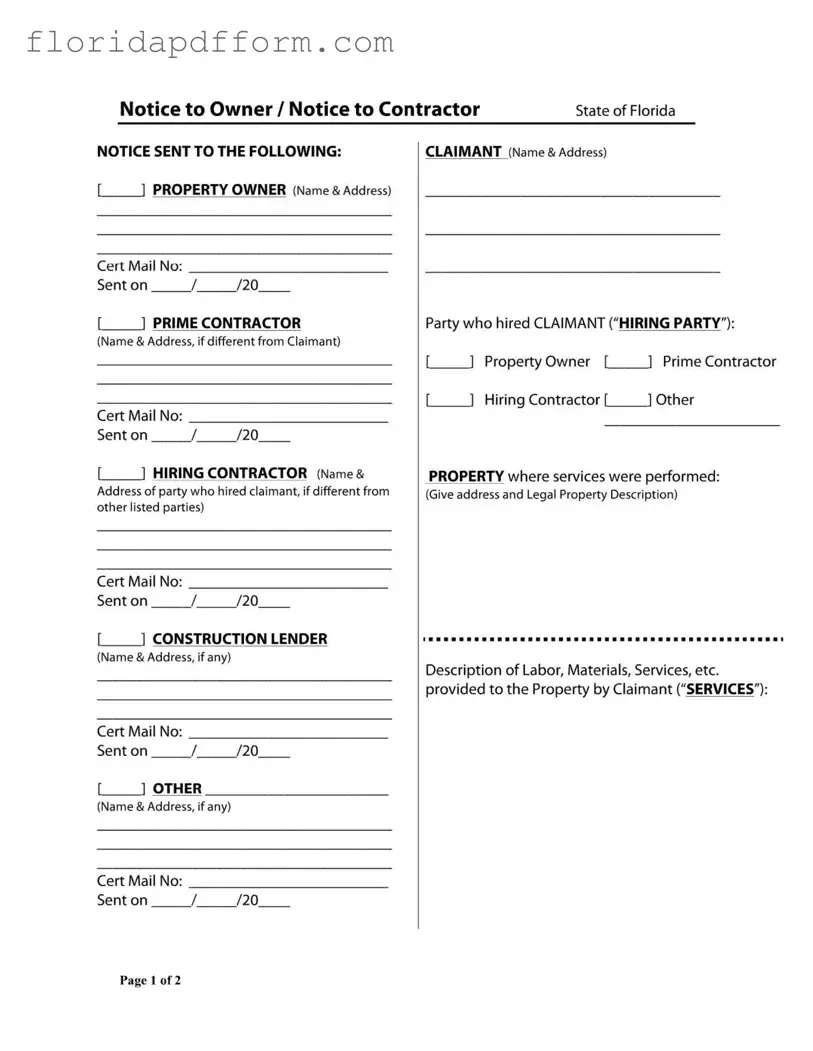Free Notice Owner Florida Form
The Notice to Owner form in Florida serves as a crucial communication tool in the construction industry. It informs property owners, contractors, and other parties involved that certain services or materials have been provided to a property, potentially impacting their financial responsibilities. Understanding this form is essential for protecting oneself from unexpected liens and ensuring all parties are properly compensated.
Launch Editor
